Test / E-Bike: Für knapp 5.000 Euro ist das Pegasus Estremo Evo 9 Lite das derzeit günstigste E-Bike mit dem innovativen Pinion MGU Antrieb. Ob das Alltags- und Tourenrad trotz einiger Sparmaßnahmen in der Praxis überzeugen kann?
Es ist selten, dass ein neues Produkt eine derartige Begeisterung auslöst, wie es im vergangenen Sommer bei der Pinion MGU der Fall war. Die Kombination aus kräftigem Mittelmotor und wartungsfreier Getriebeschaltung in einer Einheit am Tretlager traf den Nerv zahlreicher E-Biker. Auf die erste Euphorie folgte jedoch bei der Vorstellung der vielen E-Bikes mit Pinion MGU vielerorts Ernüchterung: Das innovative Antriebssystem sorgt nämlich für einen doch recht saftigen Aufpreis im Vergleich zu einem herkömmlichen Mittelmotor samt gängiger Naben- oder Kettenschaltung. Entsprechend erfreulich ist das Pegasus Estremo Evo 9 Lite, das derzeit für knapp 5.000 Euro zu haben und damit das günstigste E-Bike mit Pinion MGU ist.
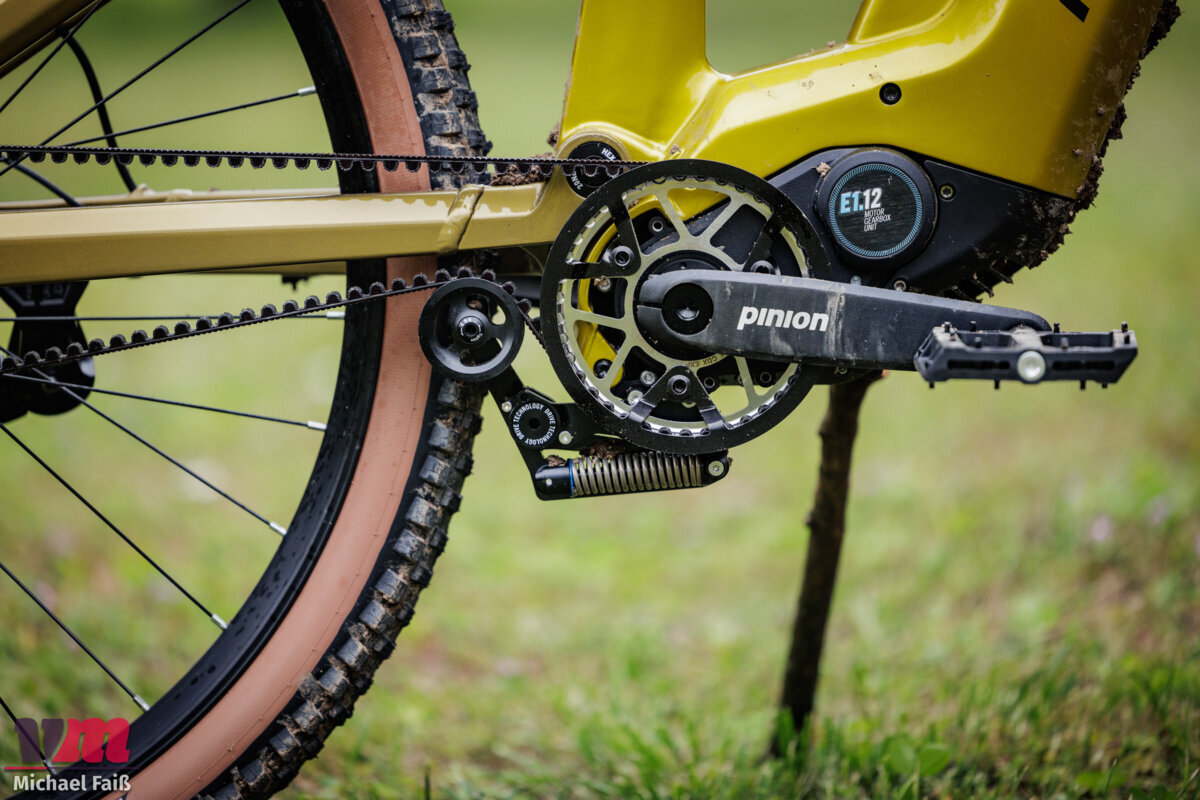
Pinion MGU E-Drive System im ersten Test: Der Beginn einer neuen E-Bike Ära?
Test / E-Bike: Mit dem Pinion E-Drive System bzw. der Pinion MGU gibt es einen neuen spannenden Namen bei den E-Bike Antrieben. Als Kombination aus Getriebeschaltung und Mittelmotor ist er derzeit einzigartig auf dem Markt. Eine klassische Schaltung wird damit überflüssig, egal ob am Citybike oder am E-MTB. Wir haben uns das neue System genau […]
Wie von Pegasus gewohnt richtet sich das Estremo Evo 9 Lite vornehmlich an den Alltags-, Touren- und Trekkingeinsatz. Dafür sprechen die komfortable Sitzposition, die sich per verstellbarem Vorbau auf die eigenen Bedürfnisse anpassen lässt, ebenso wie die drei Rahmenformen (Herren- und Trapezrahmen sowie Tiefeinsteiger). Farblich bleibt das Estremo Evo 9 Lite klassisch und ist entweder in glänzendem Weiß wie bei unserem Testrad oder einem dunklen Blau erhältlich.
Pinion MGU: 9 Gänge und viel Power am Pegasus Estremo Evo 9 Lite
Als eines von nur wenigen Pinion E-Bikes kommt das günstige Estremo Evo mit der 9-Gang Variante der integrierten Schaltung. Gegenüber des 12-Gang Modells fällt hier die Bandbreite geringfügig kleiner aus (568% vs. 600%), dafür ist sie rund 100 g leichter und wohl auch etwas günstiger. Für ein Alltagsrad vom Schlage des Pegasus halten wir das 9-Gang Getriebe ohnehin für die bessere Wahl, da die Entfaltung mehr als ausreichend ist und die größeren Gangsprünge häufige Schaltvorgänge reduzieren.
Der Motor ist dagegen ebenso kräftig und wird von Pinion selbst mit einem vergleichbaren Drehmoment von 85 Nm angegeben. Damit stünde er auf dem Papier auf einem Level mit Bosch CX, Shimano EP8(01) und co. Unsere Prüfstandsmessungen zeigen jedoch, dass der Pinion Motor hier sogar ein wenig die Nase vorn hat – an Leistung mangelt es dem Pegasus Estremo Evo 9 Lite entsprechend nicht. Versorgt wird der Motor von einem im Unterrohr integrierten 700 Wh Akku. Da der Energieverbrauch des Systems etwas über dem vergleichbar kräftiger Antriebe liegt, kann man hier mit Reichweiten rechnen, die etwa auf dem Level eines Bosch CX mit 625 Wh Akku liegen.
Übrigens: Selbst bei „leerem“ Akku sind Schaltvorgänge natürlich weiterhin problemlos möglich. Auch das Treten fällt bei ausgeschaltetem Antrieb erfreulich leicht, wenngleich die über 25 kg des Pegasus Estremo Evo 9 Lite natürlich dann umso deutlicher zu spüren sind.
Klassische Kette statt Carbonriemen
Der vielleicht größte Pluspunkt der Pinion MGU gegenüber klassischen Antriebssystem bzw. Schaltungen ist ihre Wartungsarmut. Der süddeutsche Hersteller verspricht einen quasi verschleißfreien Betrieb über die gesamte Lebensdauer des Bikes. Natürlich bietet sich dann die Kombination mit einem Carbonriemen anstelle einer Kette an; leider ist dieser am Pegasus Estremo Evo 9 Lite wohl dem niedrigen Preis zum Opfer gefallen. Der Traditionshersteller setzt stattdessen auf eine klassische, jedoch sehr breite Kette. Bei der Lebensdauer dürfte diese gar nicht so weit hinter einen Carbonriemen zurückfallen, die entsprechende Pflege ist dafür jedoch natürlich notwendig.
Gute Ausstattung mit einem schmerzhaften Kompromiss
Nachdem das Rad zunächst für einen Preis von 5.499 Euro angekündigt wurde, startet es wohl in diesen Tagen direkt mit einem Rabatt von 500 Euro, so ist es jedenfalls auf der offiziellen Webseite angegeben. Hierfür bekommt man ein solides, alltagstaugliches Ausstattungspaket, bei dem jedoch hier und dort durchaus spürbar der Rotstift angesetzt wurde. Neben dem angesprochenen Verzicht auf einen Riemenantrieb ist dies vor allem bei den Bremsen zu spüren. Die verbauten Shimano-Stopper sind zuverlässig, verlangen jedoch nach deutlich höheren Handkräften als man heutzutage von einem hochwertigen E-Bike in dieser Preisklasse erwarten würde.
| Rahmen | Pegasus Estremo |
| Federgabel | SR Suntour Mobie 25Air |
| Antrieb | Pinion MGU E1.9 |
| Akku | 700 Wh |
| Laufräder | Ryde Andra 25 |
| Reifen | Schwalbe Marathon Almotion Performance 2,2" |
| Schaltwerk | Pinion MGU |
| Schalthebel | FIT Remote eShift |
| Kurbel | Pinion P8534 |
| Umwerfer | Ohne |
| Bremse | Shimano MT200 |
| Sattelstütze | Alloy 31,6 |
| Sattel | Zecure Comfort |
| Vorbau | SUVi CCS Slot Mount ready |
| Lenker | Zecure Comfort |
Wenig Anlass zur Kritik bieten dagegen die Luftfedergabel von SR Suntour, die hochwertigen Anbauteile wie Schutzbleche, Gepäckträger und Vorbau samt Lenker. Auch die voluminösen, leicht profilierten Reifen von Schwalbe passen gut zum Einsatzgebiet und erlauben sogar kleinere Ausflüge auf Wald- und Forstwege.
Wem das Estremo zusagt, sich jedoch an der Antriebskette und dem Bremsen stört, der sollte einen Blick auf das 500 Euro teurere Estremo Evo 12 Lite werfen. Hier bekommt man einen Carbonriemen, kräftige XT Bremsen, einen deutlich helleren Frontscheinwerfer mit Fernlicht und die 12-Gang Variante der integrierten Schaltung.
Das Pegasus Estremo Evo 9 Lite in der Praxis
In der Praxis gibt sich das Pegasus Estremo Evo 9 Lite genau so unauffällig und seriös, wie man es sich von einem derartigen Rad erhofft. Die Sitzposition ist aufrecht, dank komfortablem, breitem Sattel und den ergonomischen Griffen von Ergon bleibt es auch während längerer Fahrten komfortabel. Bei unsanftem Untergrund helfen die auf das Fahrergewicht einstellbare Federgabel ebenso wie die breiten Reifen – auch wenn etwa ein vollgefedertes E-SUV hier doch spürbar mehr Schläge abdämpft.
Der Antrieb weiß einmal mehr zu gefallen. In puncto Power bietet der Motor mehr, als man es für ein derartiges Bike je wirklich brauchen würde, selbst bei schwerem Gang zieht die Pinion MGU Bike samt Fahrer noch kraftvoll den Berg nach oben. Bei schnellerem Tritt und in leichteren Gängen zählt die Pinion MGU jedoch zu den lauteren Antrieben auf dem Markt – empfindlichen Gemütern würden wir deshalb eine Probefahrt empfehlen.
Tolles Display, umfangreiches Bedienteil
Zum positiven Gesamteindruck des Antriebs trägt auch das gelungene Farbdisplay bei. Es ist selbst bei direkter Sonneneinstrahlung sehr gut ablesbar und bietet alle notwendigen Informationen. In Verbindung mit der kostenlosen FIT E-Bike Control App lassen sich hier auch Navigationshinweise anzeigen. Die Steuerung erfolgt über das Bedienteil auf der Linken Seite des Lenkers, an dem sich auch der eingelegte Gang wechseln lässt. Ein echter Schalthebel wird damit also überflüssig; so kann die rechte Hand immer fest am Lenker verbleiben. Die vielen Knöpfe des Bedienteils sind zu Beginn etwas gewöhnungsbedürftig, doch bereits nach einigen Minuten geht die Steuerung in Fleisch und Blut über.
Komfortabel schalten
Ohnehin ist das Schaltverhalten herrlich intuitiv: Dadurch, dass man sowohl unter Last als auch im Stand problemlos den Gang wechseln kann, muss man sich hier keinerlei Gedanken mehr machen. Wer möchte, kann sogar die Start.select Funktion aktivieren, die beim Anhalten dann immer selbständig in einen zuvor festgelegten Gang wechselt. So hat man beispielsweise im Stop-and-go Verkehr der Stadt an der Ampel immer direkt den richtigen, gewohnten Gang eingelegt.
Wirklichen Anlass für Kritik bieten lediglich die verbauten Shimano MT200 Bremsen. Zwar bringen diese Bike samt Fahrer immer zuverlässig zum Stehen, aber gerade bei höherem Tempo und/oder längeren Abfahrten muss man hier schon beherzt am Bremshebel ziehen. Das sollte im Jahr 2024 an einem E-Bike für knapp 5.000 Euro eigentlich nicht mehr nötig sein – Pinion MGU hin oder her.

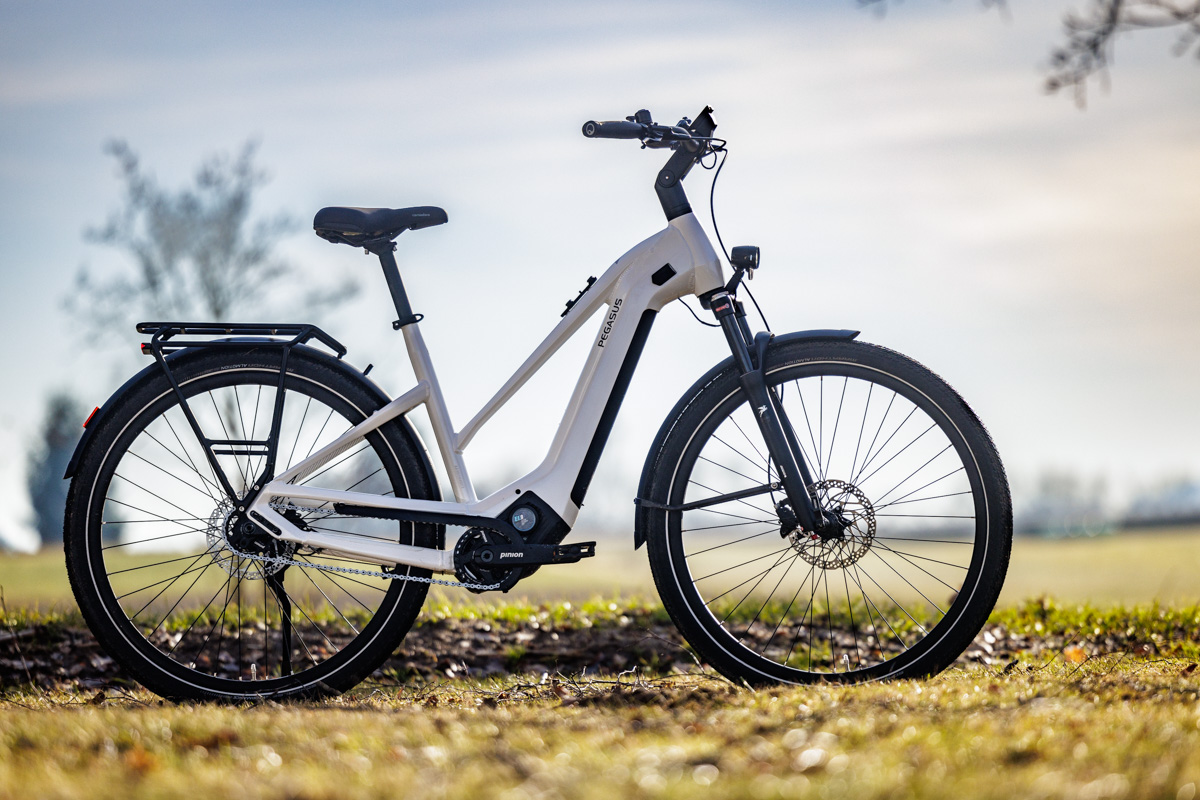
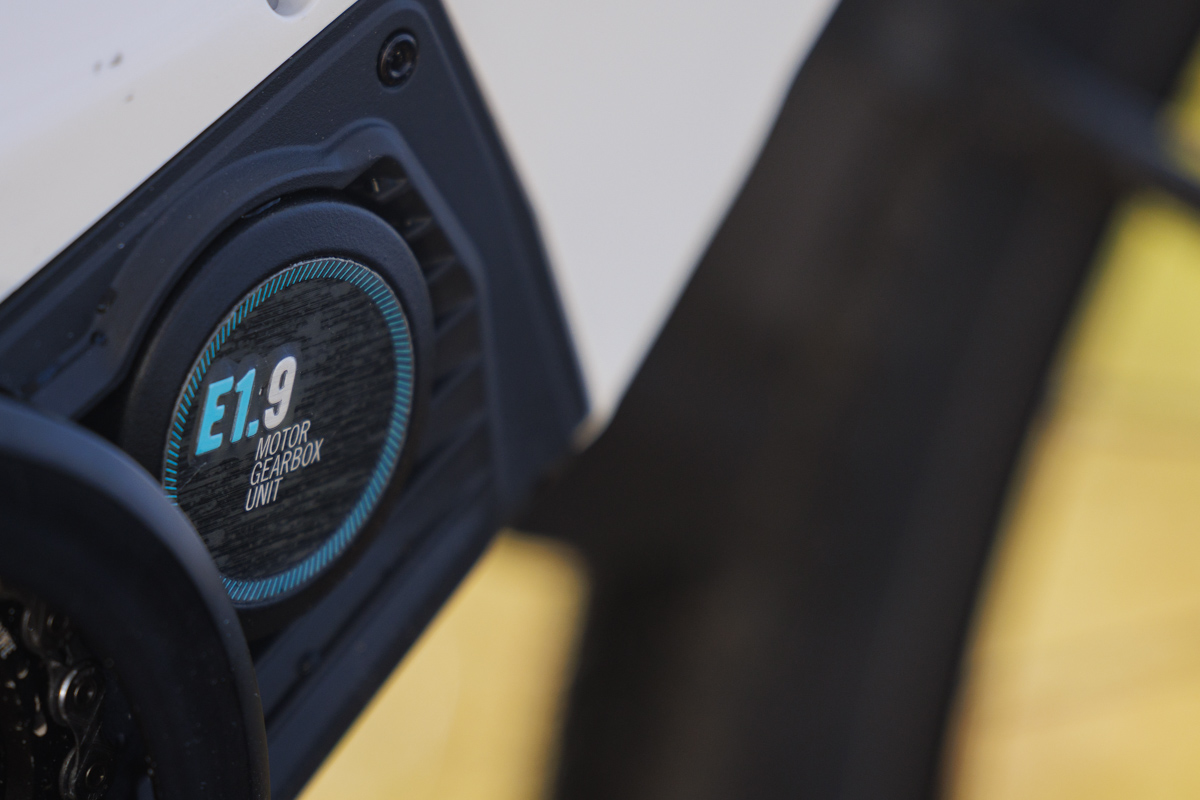
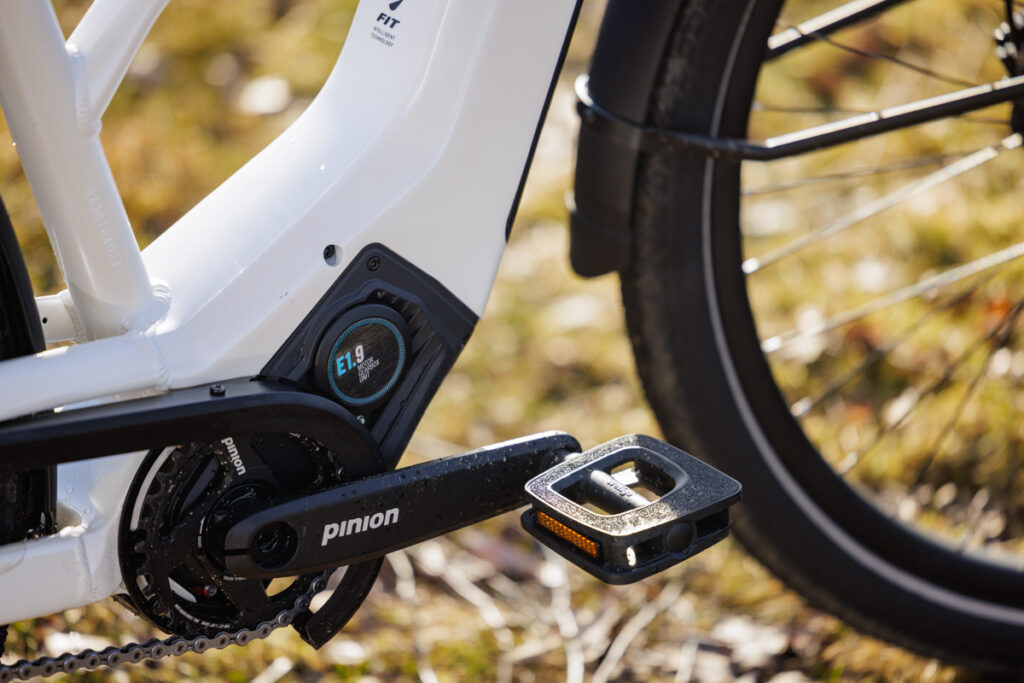
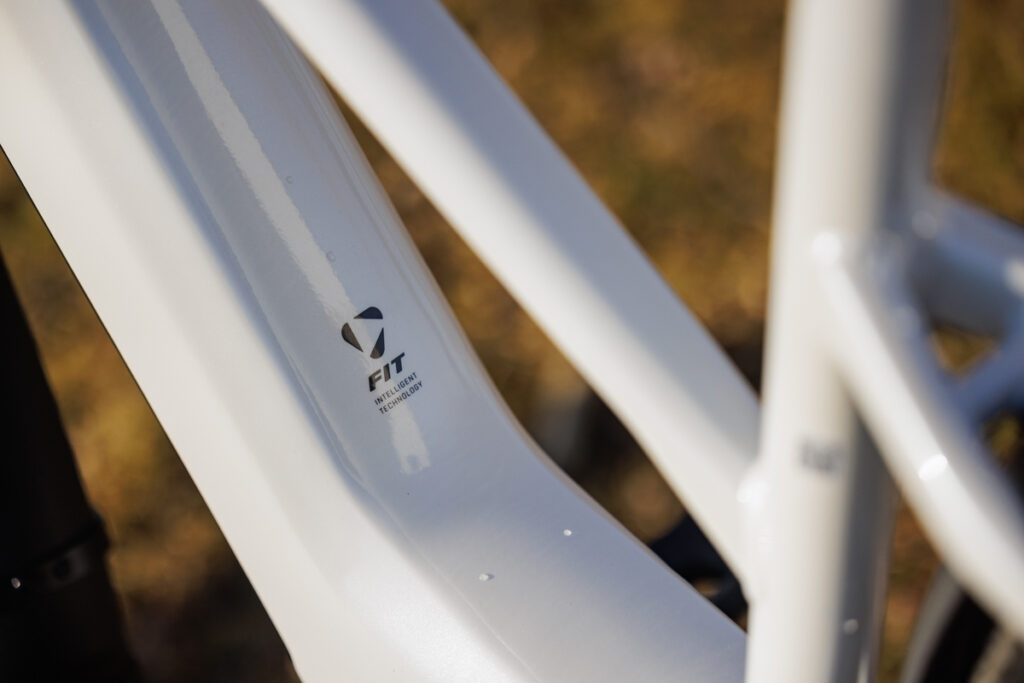
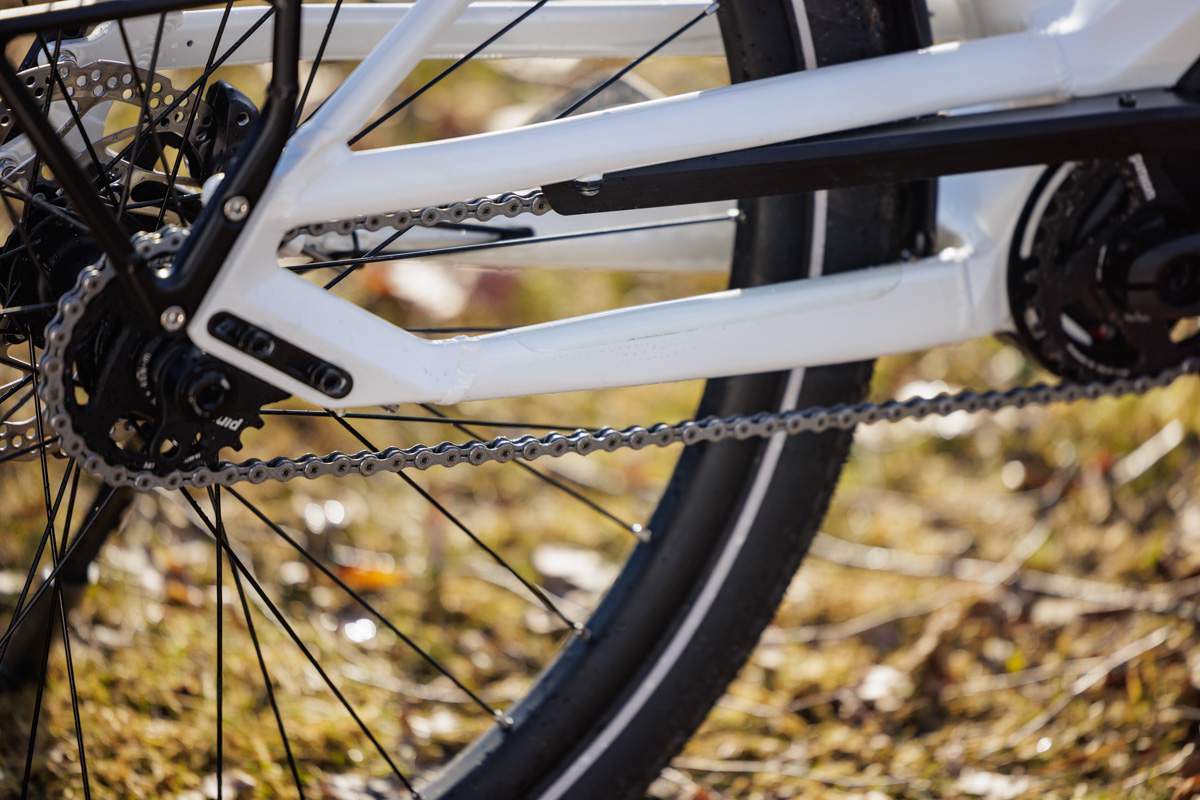
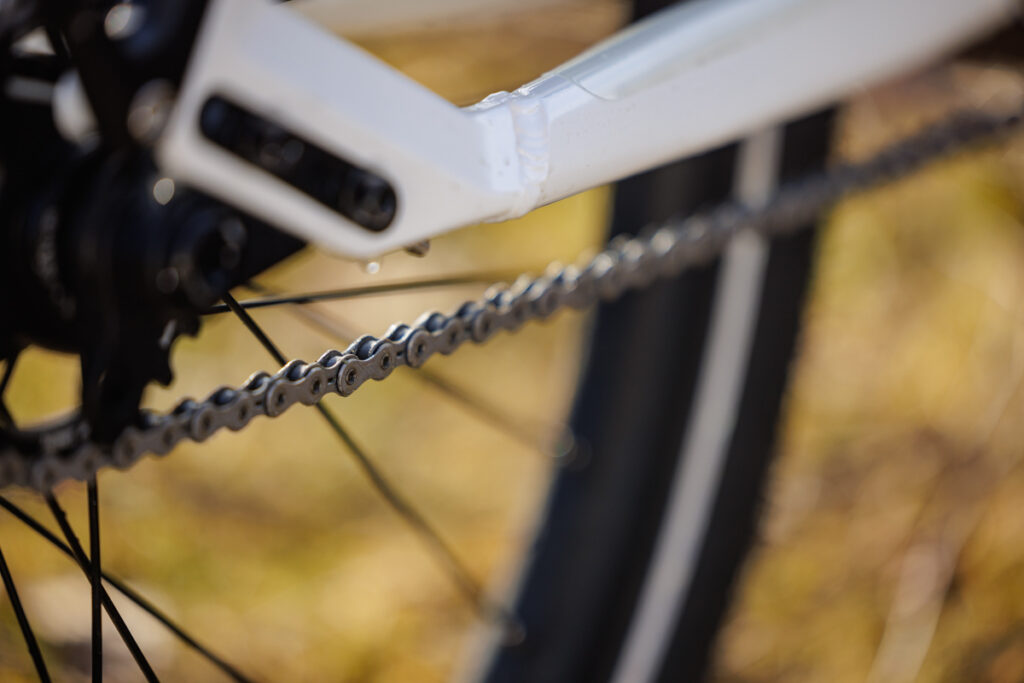
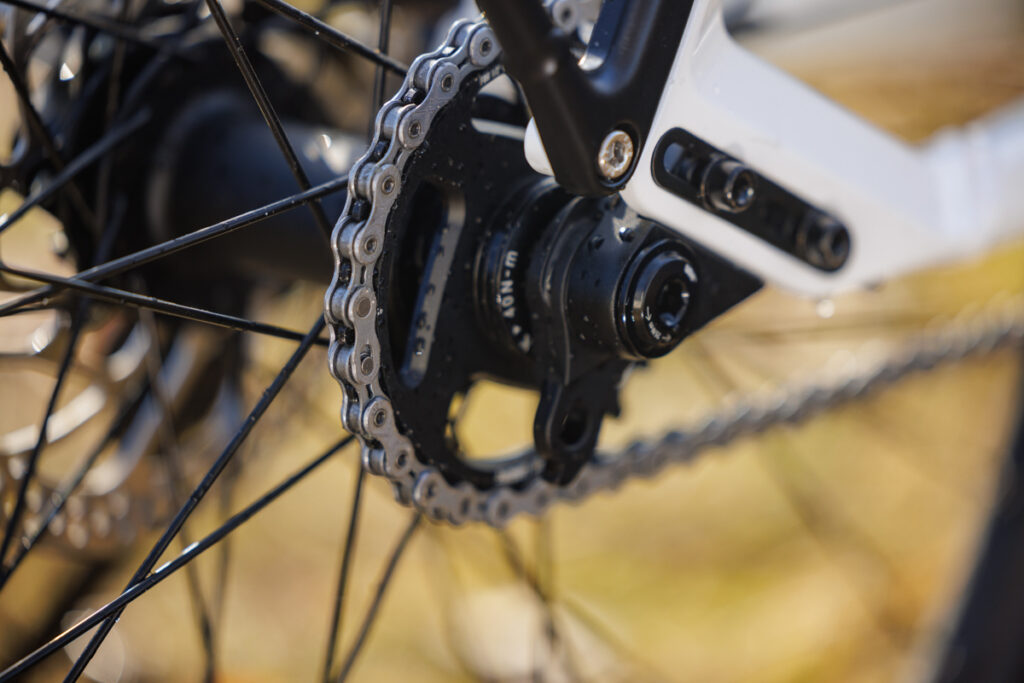
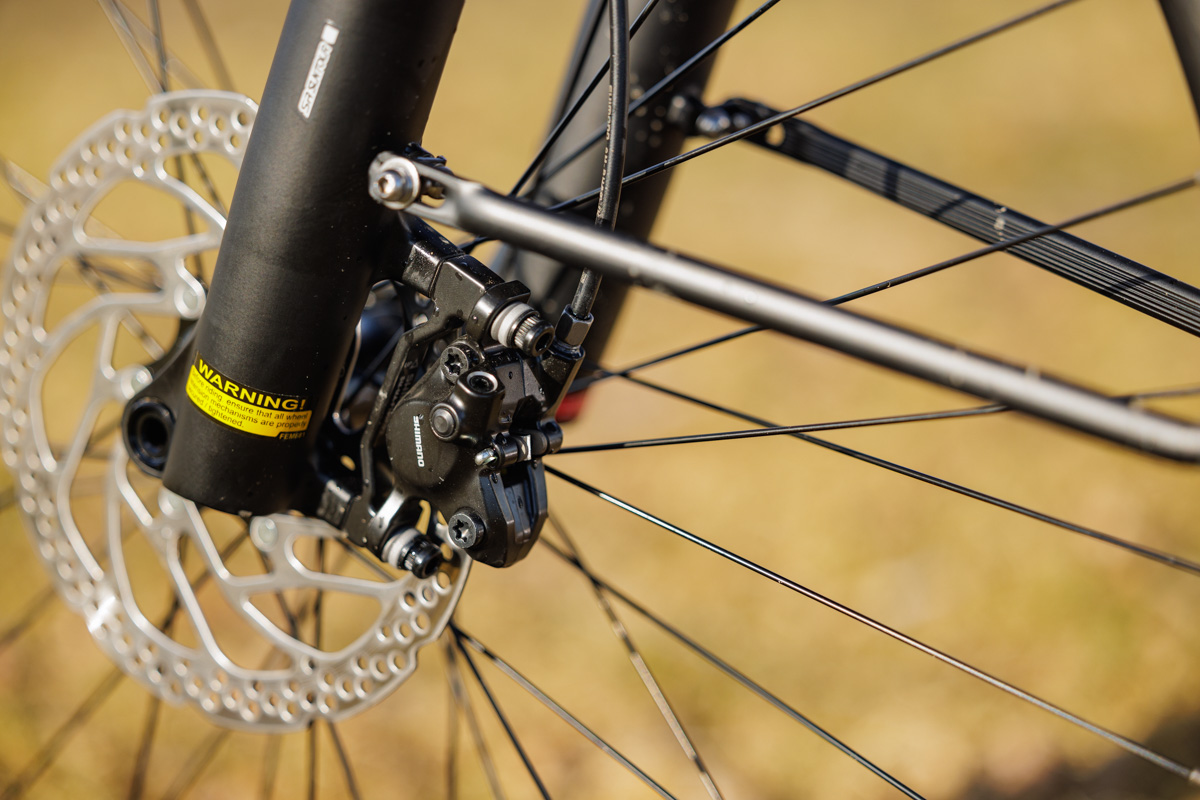
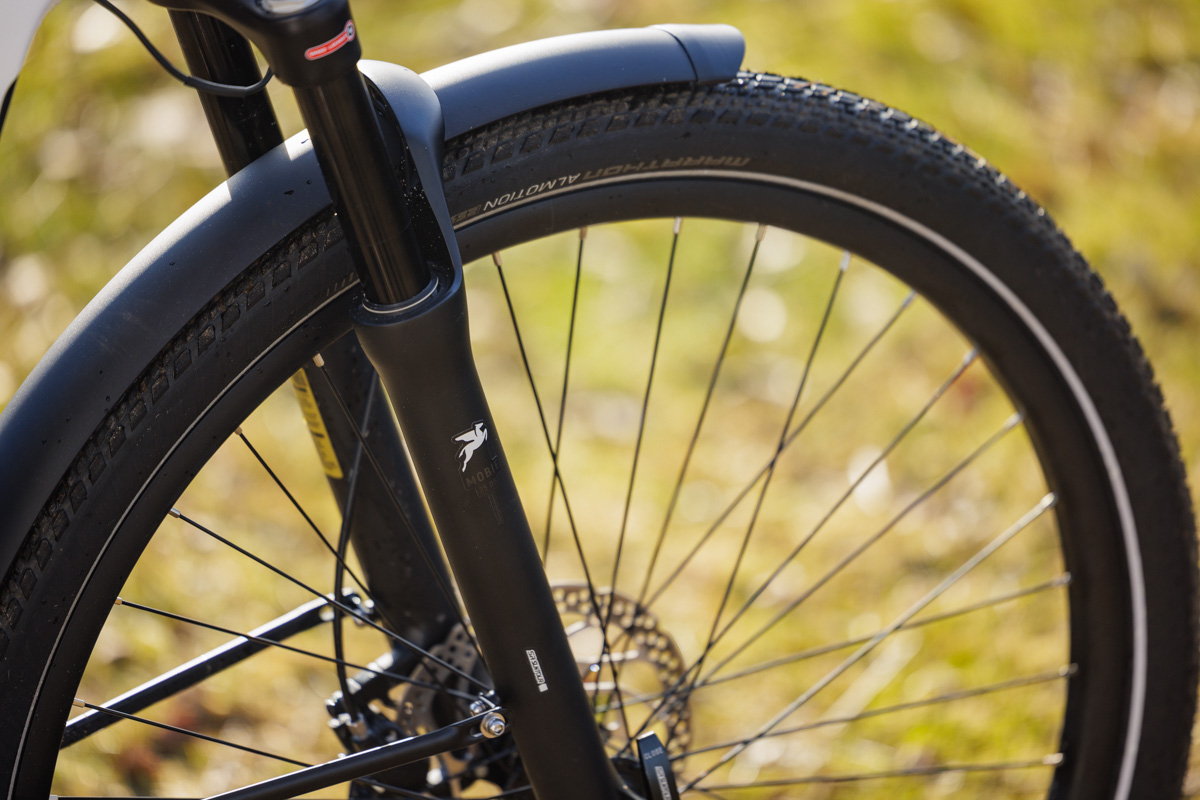
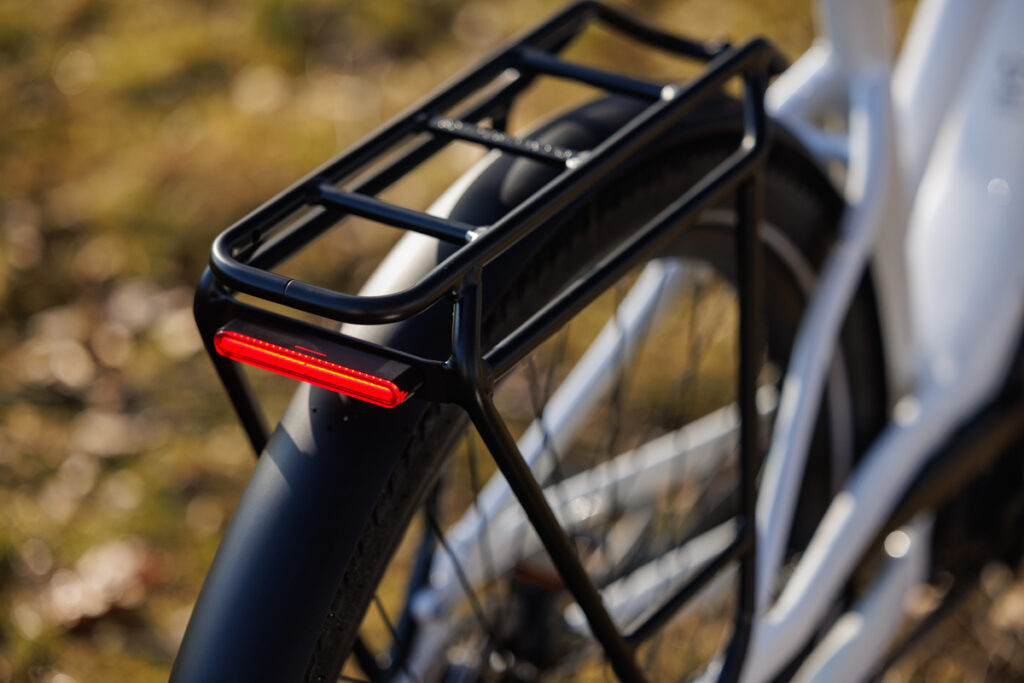
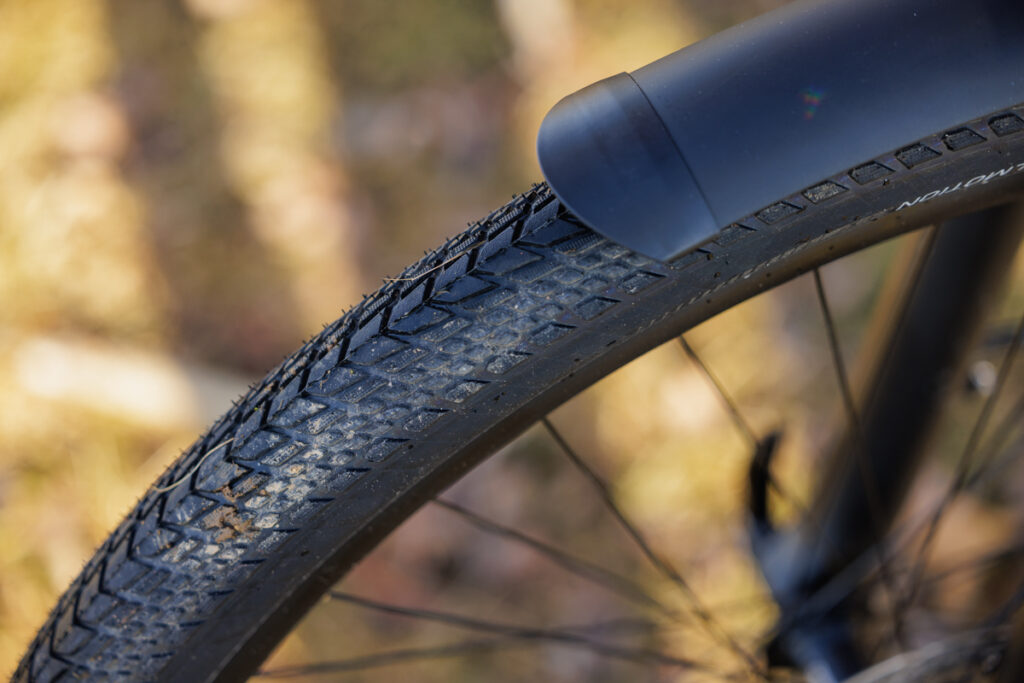
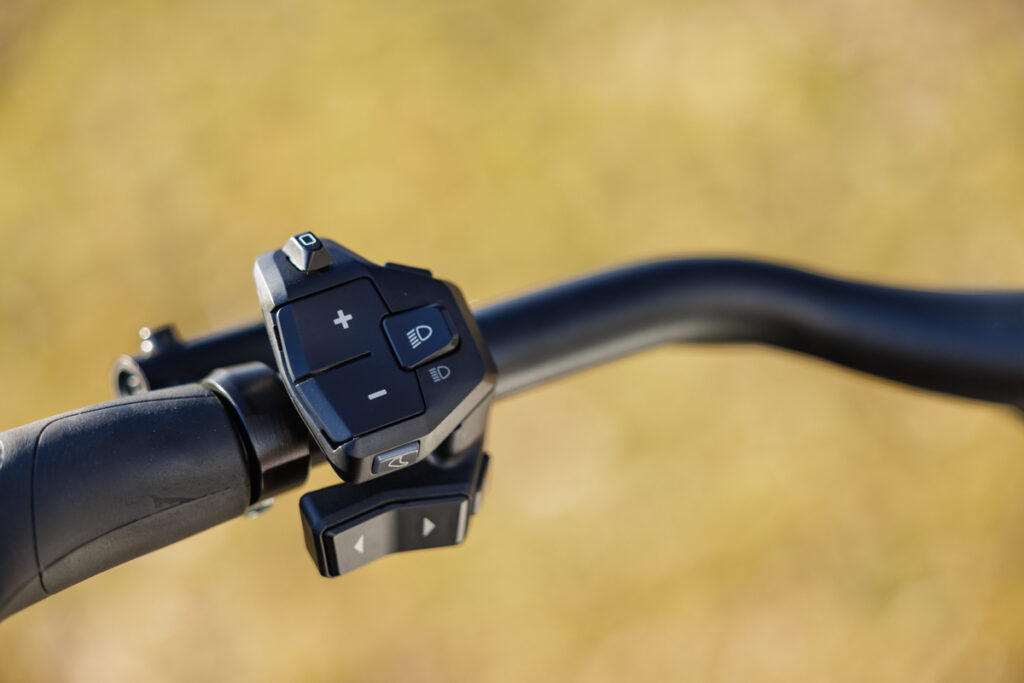
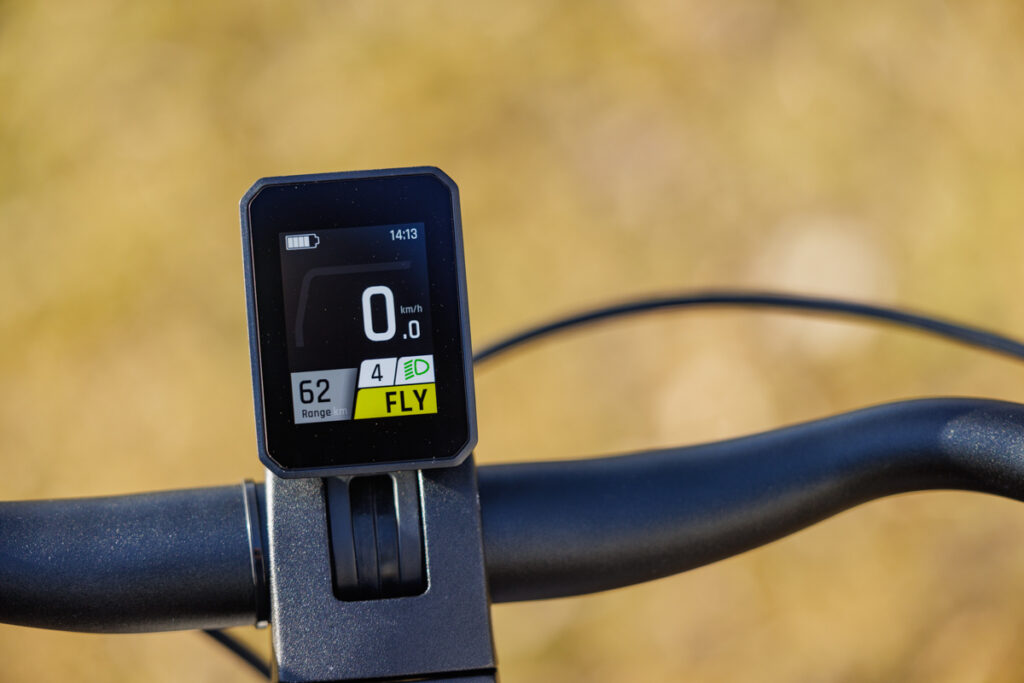
Schreibe einen Kommentar